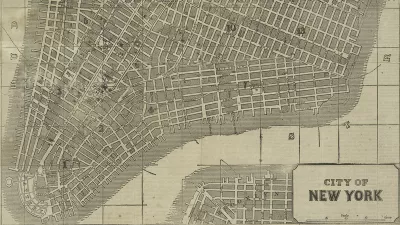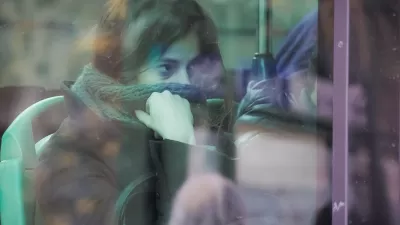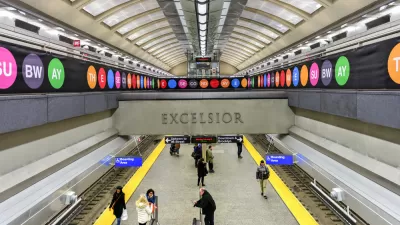A study by the Transportation Research Board calculates "land use effect" and "ridership effect" to show how much land is saved when cities include public transit.

Angie Schmitt shares news of a "study published by the Transportation Research Board quantifies the spatial impact of transit in new ways [PDF]. Without transit, the researchers found, American cities would take up 37 percent more space."
The crux of the study's findings, as described by Schmitt: "By allowing urban areas to be built more compactly, the 'land use effect' of transit reduces driving much more than the substitution of car trips with transit trips. Total miles driven in American cities would be 8 percent higher without the land use effect of transit, the researchers concluded, compared to 2 percent higher if you forced everyone who rides transit to drive." The study also found evidence of a "ridership effect," or the substitution of transit trips for car trips, but the "land use effect" is four times as large.
Schmitt also notes that the study includes a Land Use Benefit Calculator [xls], which is intended to be used just as its name describes.
FULL STORY: Without Transit, American Cities Would Take Up 37 Percent More Space

Planetizen Federal Action Tracker
A weekly monitor of how Trump’s orders and actions are impacting planners and planning in America.

San Francisco's School District Spent $105M To Build Affordable Housing for Teachers — And That's Just the Beginning
SFUSD joins a growing list of school districts using their land holdings to address housing affordability challenges faced by their own employees.

The Tiny, Adorable $7,000 Car Turning Japan Onto EVs
The single seat Mibot charges from a regular plug as quickly as an iPad, and is about half the price of an average EV.

Seattle's Plan for Adopting Driverless Cars
Equity, safety, accessibility and affordability are front of mind as the city prepares for robotaxis and other autonomous vehicles.

As Trump Phases Out FEMA, Is It Time to Flee the Floodplains?
With less federal funding available for disaster relief efforts, the need to relocate at-risk communities is more urgent than ever.

With Protected Lanes, 460% More People Commute by Bike
For those needing more ammo, more data proving what we already knew is here.
Urban Design for Planners 1: Software Tools
This six-course series explores essential urban design concepts using open source software and equips planners with the tools they need to participate fully in the urban design process.
Planning for Universal Design
Learn the tools for implementing Universal Design in planning regulations.
Smith Gee Studio
City of Charlotte
City of Camden Redevelopment Agency
City of Astoria
Transportation Research & Education Center (TREC) at Portland State University
US High Speed Rail Association
City of Camden Redevelopment Agency
Municipality of Princeton (NJ)





























